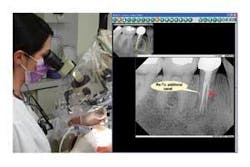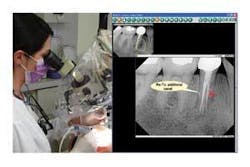Treatment success: It takes a village and technology
By Brad Durham, DMD
Delivering successful treatment is critical to the exceptional practice. This means we use our skills and all available technology to get the best outcome. We’re not alone on our quest. We sometimes partner with our specialists to help meet our goals. But what technologies help create their success stories?
Recently, I spoke with Dr. Sandra Madison, past president of the American Association of Endodontists. She maintains a private endodontic practice with Dr. Jessica Barr, in Asheville, N.C.
Brad: What are the top three technologies that have helped you to more successfully treat patients?
Sandra: In the last 10 years, endodontics has probably seen more innovation from a technology standpoint than any other area of dentistry. For me, the three most significant technologies that have dramatically affected treatment success for our specialty are magnification, rotary instrumentation, and digital imaging.
Brad: How does each of these technologies lead to more successful case outcomes?
Sandra: In the case of magnification, which includes illumination, I am referencing the use of a microscope. Obviously, when you’re doing root canal treatment, the ability to see what you’re doing with the naked eye is limited. With microscopy, we’re now able to see inside of teeth, down into canals, find additional canals, cracks, and abnormalities. We’re able to see how well we’re cleaning canals and removing debris and tissue. This helps us gain better treatment outcome and long-term prognosis.
Brad: What about rotary?
Sandra: Rotary instrumentation continues to evolve, improving our ability to clean and shape canals. There are now better instruments, more flexible and durable, designed to clean canals more effectively and efficiently. We’re getting into areas where we couldn’t go before, including tight curves. We’re bringing debris out of canals rather than pushing it into the ligament space. The result is a clean, more consistently shaped canal that’s more easily filled.
Brad: And for digital radiography?
Sandra: Endodontists rely on images to guide them throughout treatment. The fact that you can have a digital radiograph on the computer screen in a matter of seconds, instead of having to expose a traditional film and develop it before it can be read, is a major time-saving feature. This is particularly true in any practice where you’re taking multiple images during a procedure.
Also, you can enhance, enlarge, and accurately measure a digital image. Obviously, you can’t do that with the traditional X-ray films, but you certainly can do these things easily with digital imaging.
It’s been my observation that digital radiography impresses my patients more than any other technology I use. Patients can instantly see their teeth on the screen, and can better understand what I tell them about the condition of their teeth and treatment. So, I can use it as a patient education tool, in addition to using it for diagnostic and treatment purposes.
Brad: How do new technologies empower the general dentist to do higher quality endodontics?
Sandra: First of all, I tip my hat to general dentists; they have to keep up with all areas of dentistry! Endodontists concentrate on one area. With digital radiography, any dentist can easily incorporate and use this technology for all their procedures that require X-rays. Use of microscopes requires additional training and patience; there is a learning curve. Regarding rotary instrumentation, general dentists who truly enjoy endodontics and want to incorporate these technologies into their practices should pursue CE courses given by endodontists or other general dentists who are well experienced in root canal treatment. It’s not only the technology but also the clinical experience in technique that can empower.Dr. Brad Durham has practiced dentistry for 25 years with an emphasis on the treatment of head, neck, and facial pain, dental cosmetics, and complex dental reconstruction. His practice combines art, science, and technology with personalized care. He is a clinical and featured instructor at the Las Vegas Institute, and was the first in the world to earn the LVI Mastership award for esthetic reconstruction. Dr. Durham teaches a series of courses titled “The Niche Practice” at LVI and his home in Savannah, Ga. Contact him at [email protected] and www.nichepractice.com.

